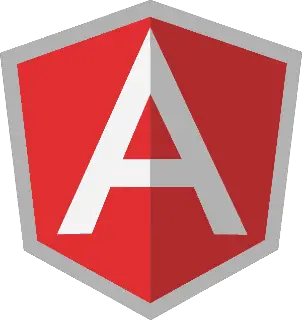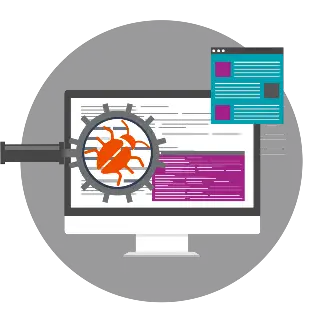Web development has, for a while, been a breeze with the range of frameworks and tools available to create great projects with minimal effort. A front-end framework can be considered a toolbox filled with all kinds of valuable tools that developers can use to create a website or application quickly and efficiently.
Like a carpenter needs his hammer and saw, a web developer needs their front-end framework to build a unique website or application. But much like any tool, both pros and cons are associated with using front-end frameworks for web development.
This article will explore the benefits and drawbacks of using a front-end framework for your project. Let’s start by opening up this “toolbox” and looking at the pros and cons of using front-end frameworks for web development.

Contents
- Overview of Front-End Frameworks and Their Relevance to Web Development
- Pros of Using Front-End Frameworks
- Cons of Using Front-End Frameworks
- Final Thought
1. Overview of Front-End Frameworks and Their Relevance to Web Development
Front-end frameworks are collections of code libraries and programs that provide a base structure for developers to build websites and applications. They provide functionality that helps make front-end development easier and faster, such as pre-built HTML, CSS and JavaScript components that can be reused. This means developers don’t have to write code from scratch when starting a new project.
Two of the most popular frontend frameworks currently being used in web development are React and Angular.
React

React enables developers to create fast, and dynamic user interfaces focusing on component-based architecture. It is an open-source JavaScript library with components that allow developers to reuse code and quickly scale up or down as needed, making development and changes much faster than other frameworks.
Angular

Angular is an open-source TypeScript-based framework created by Google that allows developers to quickly build feature-rich applications from the ground up. The Angular framework has rich features, such as two-way data binding, a robust routing system, and powerful dependency injection. It allows developers to focus on writing code for their applications instead of reinventing the wheel.
Now, to the pros and cons.
2. Pros of Using Front-End Frameworks

Simplicity
Setting up databases and APIs with front-end frameworks is much simpler than if done without. These components are already built into the framework, so developers don’t have to write code for each element. This means it’s easier for beginners to start coding quickly, as many of the necessary pieces are already in place. The framework also reduces complexity by taking care of the back-end logic, allowing developers to focus on the user experience instead.
Reusability of Code Leading To Faster Execution Time
Front-end frameworks are a web developer’s dream because they make building websites easier and offer many other benefits. One of the most advantageous features is code reusability. Developers can utilize existing tasks and functions to swiftly complete their project instead of starting from square one. This significantly decreases execution time, allowing for speedy and efficient results!
With coding taking less time, more attention can be paid to other things, like design and optimization. Also, using a framework ensures standardization, which makes it easy for developers to find mistakes and keep projects consistent. Not only does this save time, but it also means fewer chances for errors during development.
Increased Efficiency During the Development Process
Front-end frameworks are straightforward and quick to get started with. With libraries of pre-built components, you can quickly whip up a website or application without writing code from scratch. This can massively reduce the time it takes to complete a project, jumpstarting development and allowing developers to focus on the more complex tasks in their projects.
Additionally, front-end frameworks come with integrated tools that help streamline development workflows, like automatic code linting, unit tests and automated UI tests, which help to ensure all components are working as they should before they go live.
Accessibility of Easy-To-Use, Framework-Specific Libraries and Plugins
Front-end frameworks offer easy-to-use, framework-specific libraries and plugins that provide developers with the necessary components to create a well-functioning product.
For example, using React Native as a framework allows developers to use libraries and features perfectly tailored for this specific framework, cutting out potential development time by streamlining the process. Further, frameworks often provide ready-made solutions for everyday problems allowing developers more flexibility in the layout creation phase.
This makes specific design features much faster and simpler to implement than being built from scratch. Finally, these libraries significantly reduce the effort to learn new programming skills. Developers no longer need to worry about complex code structures when they have tools they can incorporate into their projects, saving them time and stress during development cycles.
Therefore, leveraging existing tools provided by frameworks can offer numerous benefits to both experienced and novice developers alike.
3. Cons of Using Front-End Frameworks

Potential for Additional Overhead Costs for Developers
For developers, transitioning from their current coding platform to any new front-end framework can come with a high cost, both financially and time-wise. Learning the ins and outs of a new coding language or structure can be challenging and labor-intensive, taking away precious hours of potential earning potential.
Even after mastering some core concepts within the framework, unexpected elements may add more complexity as projects roll out. Every professional web developer must stay current with modern technologies. But sometimes, staying up to date with the latest frameworks means developers are left paying for increased long-term overhead costs associated with investing in learning curves.
Some of these can take weeks, if not months, and requires a high degree of commitment from developers who must learn various programming languages supporting these frameworks. With shorter development times being valued so highly these days, this can eat into profitability; however, it offers businesses access to better tech solutions than might otherwise exist without them.
Possibility for Increased Complexity Due to Integration With Back-End Systems and Apis
The use of front-end frameworks can have many benefits, from providing structure and uniformity to improving the speed and efficiency of web design. However, one serious con is the potential for increased complexity due to integration with back-end systems and APIs.
If not carefully managed, combining these two distinct parts of web development – front-end and back-end – can cause complications that complicate the entire process. As a result, designers and developers may take longer than necessary to integrate the two components or troubleshoot any problems that arise in such an integration.
Implementing front-end frameworks can also limit your ability to customize certain features since some require specific formatting and libraries, which may not be suited for all applications. Considering all the pros and cons before deciding whether to use front-end frameworks is essential, as they can create more difficulties than they solve.
Difficulty in Troubleshooting
One of the primary cons of using front-end frameworks is difficulty troubleshooting when issues arise from using multiple components from different frameworks together. This kind of issue can slow down the development process, as the source of the problem is often not obvious and can require a substantial amount of time to pinpoint.
Depending on their experience and technical knowledge level, developers may struggle to debug and resolve these problems correctly. Additionally, some components may not be compatible and require significant effort to work together productively, resulting in more resource expenditure.
In visually-oriented environments, minor errors can quickly spiral out of control and render entire pages useless if caught immediately. Therefore, developers using multiple frameworks must be cautious to ensure stability and maintain performance throughout development.
Updates Can Introduce Bugs
Many developers like using front-end frameworks to speed up development and produce an end product more quickly. However, most developers don’t consider that software updates often come with bugs of their own — and when you use a front-end framework, those bugs can potentially affect your entire project.
Sure, developers can keep their version of the framework old or even wholly avoid updates altogether; however, doing so means they miss out on important bug fixes or newly added features. This can be a costly sacrifice in terms of both time and money. As such, developers need to weigh their need for speed with the potential pitfalls of relying heavily on frameworks.
4. Final Thought
Front-end frameworks are an excellent way for developers to increase efficiency and create comprehensive web applications without writing code from scratch. As these tools evolve, developers need to stay informed about the latest trends in framework development and any potential new features that can be leveraged while ensuring quality standards remain high.
